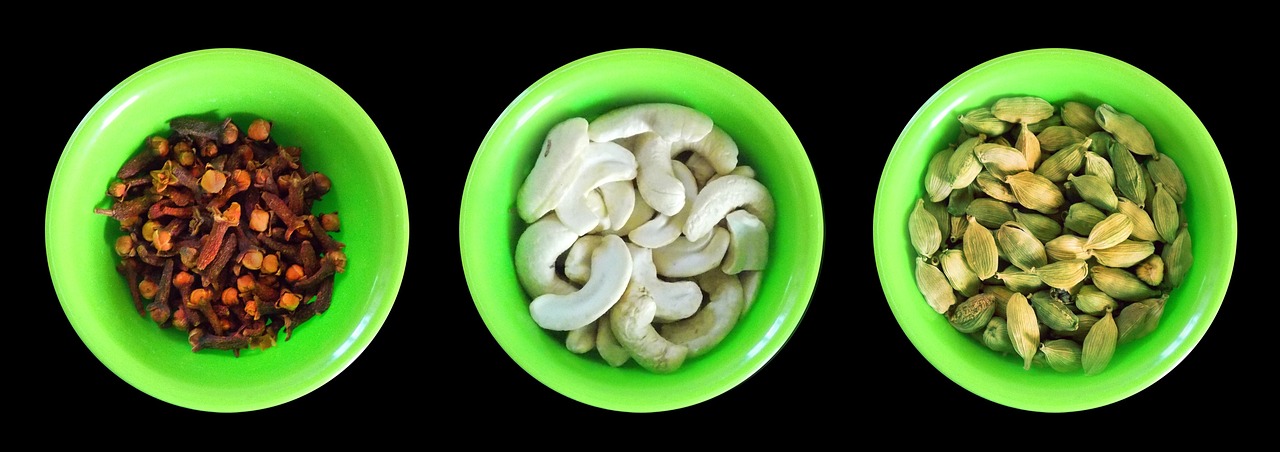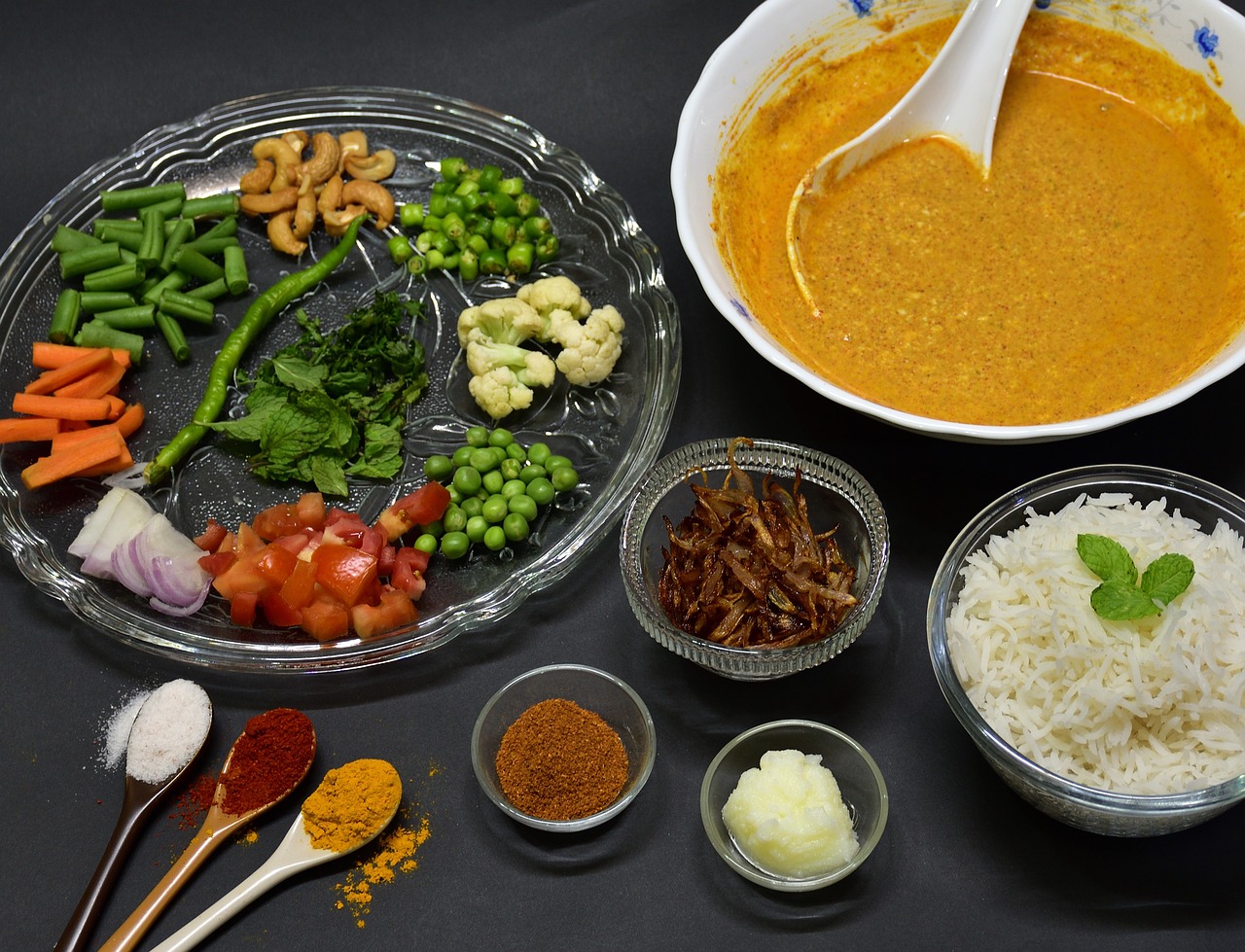Biryani Recipe: Spicy and Aromatic Rice Dish from Indian Cuisine

When it comes to iconic dishes in Indian cuisine, few can rival the flavorful and aromatic delight of Biryani. This beloved rice dish is a true masterpiece, combining fragrant basmati rice with a rich blend of spices, tender meat, or vegetables, creating a symphony of flavors that explode in your mouth with every bite.
Originating from the Mughal era, Biryani has evolved over the centuries into various regional styles, each with its unique twist on the classic recipe. Whether you prefer the fiery kick of Hyderabadi Biryani or the subtle elegance of Lucknowi Biryani, there is a version of this dish to suit every palate.
What makes Biryani truly special is the meticulous layering of ingredients and the slow cooking process, allowing the flavors to meld together and create a harmonious blend that is greater than the sum of its parts. The tantalizing aroma that wafts from a pot of Biryani as it simmers on the stove is enough to make anyone's mouth water.
But what sets Biryani apart from other rice dishes is not just its taste but also the experience it offers. The act of digging into a steaming plate of Biryani, uncovering the hidden treasures of tender meat or vegetables nestled within the fragrant rice, is akin to embarking on a culinary adventure that promises satisfaction with every spoonful.
Whether you are a seasoned chef looking to impress your guests or a home cook eager to try your hand at a new recipe, mastering the art of Biryani is a rewarding journey that is sure to delight your taste buds and leave you craving for more.
Ingredients and Preparation
When it comes to preparing a delicious and aromatic biryani dish, the key lies in the perfect combination of essential ingredients and meticulous preparation. Let's dive into the world of flavors and spices that make this Indian cuisine a true culinary delight.
First and foremost, the star of the show in any biryani recipe is the fragrant basmati rice. Known for its long grains and distinct aroma, basmati rice forms the foundation of this dish. Alongside the rice, tender pieces of meat such as chicken, lamb, or goat are commonly used to add richness and depth of flavor.
To infuse the biryani with its signature taste, a blend of spices is essential. This typically includes a mix of cumin, coriander, cardamom, cloves, cinnamon, and bay leaves. Each spice contributes its unique essence to the dish, creating a symphony of flavors that tantalize the taste buds.
Additionally, ingredients like onions, garlic, ginger, and green chilies are sautéed to form a fragrant base for the biryani. The combination of these aromatics adds complexity and depth to the overall taste profile of the dish.
For those seeking a vegetarian version, vegetables such as potatoes, carrots, and peas can be used as a flavorful alternative to meat. This vegetarian option offers a lighter yet equally satisfying variation of the classic biryani.
When it comes to the preparation process, layering is key to ensuring that every bite is infused with flavor. The rice and meat are typically cooked separately before being layered in a pot or pan. This layering allows the flavors to meld together while retaining the individual essence of each component.
To seal in the moisture and aroma, the biryani is often cooked using the dum method, where the pot is sealed with a tight-fitting lid and cooked over low heat. This slow cooking process ensures that the flavors intensify and the rice achieves the perfect texture.
Before serving, the biryani is garnished with fresh coriander, mint leaves, and crispy fried onions to add a final touch of freshness and crunch. The result is a tantalizing dish that is as visually appealing as it is delicious.
In conclusion, mastering the art of biryani preparation requires a careful balance of ingredients, spices, and techniques. By following a few simple steps and incorporating the right flavors, you can create a dish that is sure to impress and delight your taste buds.
Variations and Regional Styles
When it comes to biryani, the variations and regional styles across India are as diverse and vibrant as the country itself. Each region boasts its own unique take on this beloved dish, offering a tantalizing blend of flavors and aromas that cater to different palates and preferences. From the fragrant Awadhi biryani of Lucknow to the fiery Hyderabadi biryani of the south, there is a biryani style for every taste bud.
One of the most popular variations is the Hyderabadi biryani, known for its bold and spicy flavors. This style typically features marinated meat layered with fragrant basmati rice and cooked with a medley of aromatic spices. The result is a burst of flavors with each mouthful, leaving a lingering warmth that is both comforting and satisfying.
On the other hand, the Lucknowi biryani takes a more subtle approach, focusing on delicate flavors and tender meat that melts in your mouth. This style often incorporates saffron-infused rice and is cooked using the dum method, where the pot is sealed to trap the steam and infuse the dish with rich flavors.
As you travel across India, you will encounter even more regional variations of biryani, each with its own distinct characteristics. From the Kolkata biryani with its use of potatoes and boiled eggs to the Malabar biryani that features the unique blend of coconut and spices, the possibilities are endless.
Whether you prefer a spicy kick or a more subtle flavor profile, there is a biryani style out there waiting to tantalize your taste buds. So, the next time you sit down to enjoy this iconic dish, take a moment to savor the regional influences that have shaped it into the culinary masterpiece it is today.
Serving Suggestions and Accompaniments
When it comes to serving biryani, there are several suggestions and accompaniments that can elevate the dining experience to a whole new level. Whether you are preparing a traditional chicken biryani or a fragrant vegetable biryani, the right accompaniments can complement the flavors and spices of this beloved dish.
One classic accompaniment to biryani is raita, a cooling yogurt-based condiment that helps balance the heat of the spices in the rice. The creamy texture and refreshing taste of raita make it a perfect pairing for the bold flavors of biryani. You can customize your raita with ingredients like cucumber, mint, or roasted cumin for added freshness.
Another popular side dish to serve with biryani is a fresh salad made with crisp vegetables like cucumbers, tomatoes, and onions. The crunchy texture and tangy flavors of the salad provide a refreshing contrast to the rich and spicy biryani. A squeeze of lemon juice and a sprinkle of chaat masala can enhance the taste of the salad even further.
For those who enjoy a bit of tanginess and spice, pickles are a must-have accompaniment with biryani. Whether you prefer mango pickle, lime pickle, or mixed vegetable pickle, the tangy and pungent flavors of pickles can add an extra kick to each bite of biryani. The combination of the savory rice dish with the zesty pickle creates a delightful explosion of flavors in your mouth.
When serving biryani, consider presenting it with a garnish of fresh herbs like cilantro or mint to add a pop of color and a hint of freshness. The vibrant green herbs not only enhance the visual appeal of the dish but also provide a subtle herbal aroma that complements the spices in the biryani.
To create a complete meal experience, you can also serve biryani with crispy papad or flaky parathas on the side. The crunchy texture of papad or the buttery layers of parathas can add a delightful contrast to the soft and aromatic rice dish, making each bite a tantalizing treat for your taste buds.
Whether you choose to pair your biryani with raita, salad, pickles, fresh herbs, or crispy sides, the key is to create a harmonious balance of flavors and textures that enhance the overall dining experience. Experiment with different combinations to find your perfect match and enjoy the explosion of tastes that biryani and its accompaniments have to offer.



 HazalVardal
HazalVardal 





